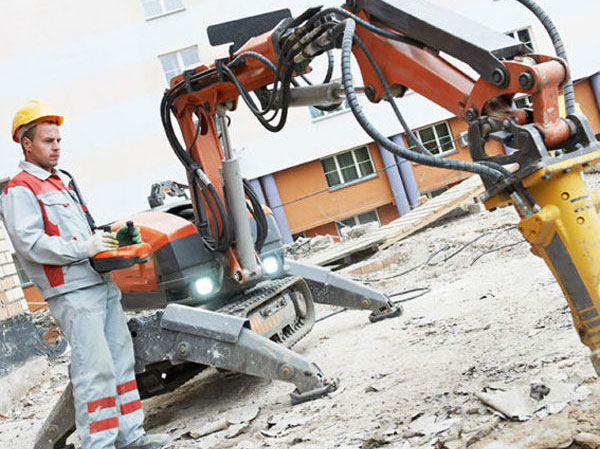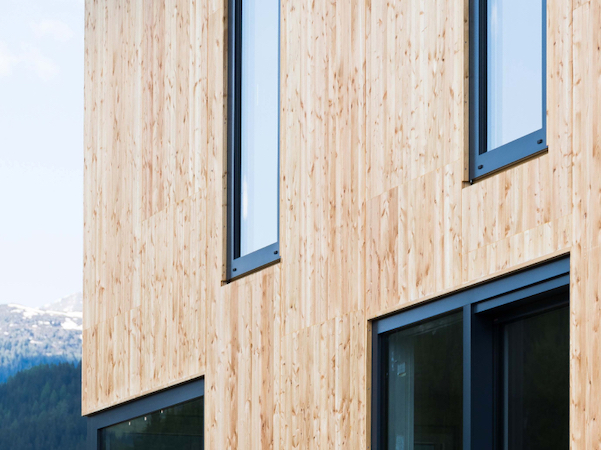The human side of robotics in construction

Our Sustainable Future – Podcast
September 30, 2022
Addressing the Problem of Waste in the Built Environment
November 30, 2022The question of the relationship between construction and technologies such as robotics is relevant now because of some of the challenges the industry is facing. In an article for the Journal of Commerce by Peter Caulfield, Helen Goodland joins construction leaders Chris Gardner and Bill Ferreira to discuss where things are heading.
Is robotics a loyal ally of construction workers, relieving them of some of the drudgery of their jobs and leaving them with the more interesting parts? Or is it a false friend that will steal their meal ticket and leave them in the unemployment line? “Robots will never replace construction labour,” says Helen Goodland, principal and head of research and innovation of Scius Advisory Inc. “Some construction tasks can be automated, but not entire jobs, and there’s an ongoing labour crisis that doesn’t look like it will end soon. As some tasks become automated, some workers will be redeployed to other jobs.”
The question of the relationship between construction and technologies such as robotics is relevant now because of some of the challenges the industry is facing.
Chris Gardner, president of the Independent Contractors and Businesses Association, says construction is looking at “a perfect storm” of serious challenges. “We’re going over a demographic cliff,” said Gardner. “We have an aging population and workers are retiring, resulting in a shortage of labour in construction.”
Another challenge bedeviling the industry is the continuing rise in the cost of materials. “We’re still dealing with supply chain problems that originated with the COVID-19 pandemic,” said Gardner. “The global supply chain is more fragile and prone to disruption than we thought.”
A third challenge is the rigmarole around permitting and regulations.Permitting delays, fees and red tape contribute significantly to the housing affordability crisis, Gardner says. Half of total housing costs can be accounted for by the regulatory burden. In Vancouver, according to a recent report, these added costs are the highest in Canada and higher than most cities around the world. In all these challenges, technology and robotics can reduce the time it takes to build a project and make building more efficient,” Gardner said.
BuildForce Canada says the construction industry has its work cut out for it. “The challenges faced by construction are two-fold,” said BuildForce executive director Bill Ferreira. “An increase in demand for construction services has increased employment (demand) faster than the labour force (supply). At the same time, the industry is dealing with the retirement of the baby boomers from the labour force.” Twenty per cent of Canada’s population is between the ages of 50 and 64, and most of them will retire in the next 15 years. At the same time, only 16 per cent of the population is under 15. To make matters worse, all Canadian industries are facing the same challenges at the same time, which will increase the competition for younger workers over the next 15 years.
Ferreira says robotics will likely complement, rather than replace, human construction labour, at least over the next few decades. “It will greatly depend on the tasks in question and the ability of these technology tools to fit into the construction work environment,” he said. “For example, there are probably more opportunities to use robotics in greenfield developments, because the work flow there can be adjusted to accommodate the machines.
“It’s much harder, however, to use robotics in tight and confined spaces, such as in standing buildings, where there isn’t enough room.” Ferreira says the most recognizable example of robotics in construction is likely Spot, the robot created by Boston Dynamics. “Drones, welders and other robotic technologies are starting to find their way into the sector, but most of these technologies are still complements to labour and directed by workers,” he said.
As Artificial Intelligence (AI) becomes more common in both the larger economy and the construction industry, the biggest changes will mostly come from a shift toward off-site prefabrication and onsite assembly. “As this happens, construction workers will transition away from onsite construction to onsite assembly,” said Ferreira. “Onsite assembly, rather than construction, will likely reduce the number of workers that are needed onsite.”
On the other hand, demand for construction workers in the future is likely to increase as the country transitions to a low-carbon economy. “Without the construction industry, the transition will simply not be possible,” said Ferreira. How soon any of this will take place is unknown.“Prefabrication is not new and has been used extensively in other countries around the world with older populations, such as Japan,” Ferreira said. “However, its adoption in Canada has been very slow.”




